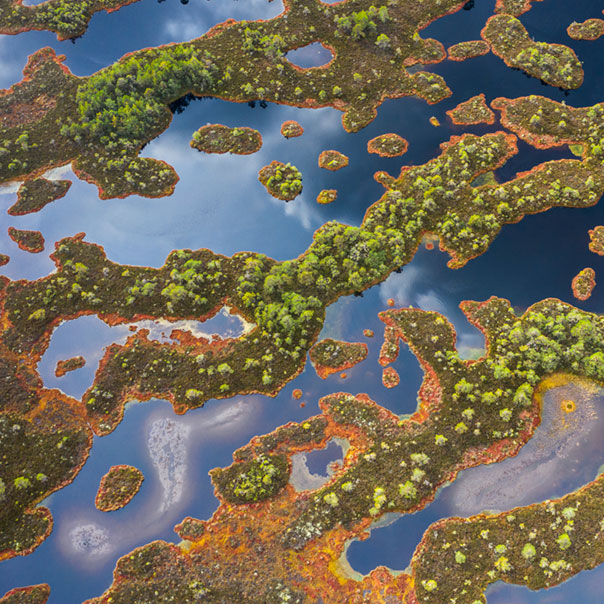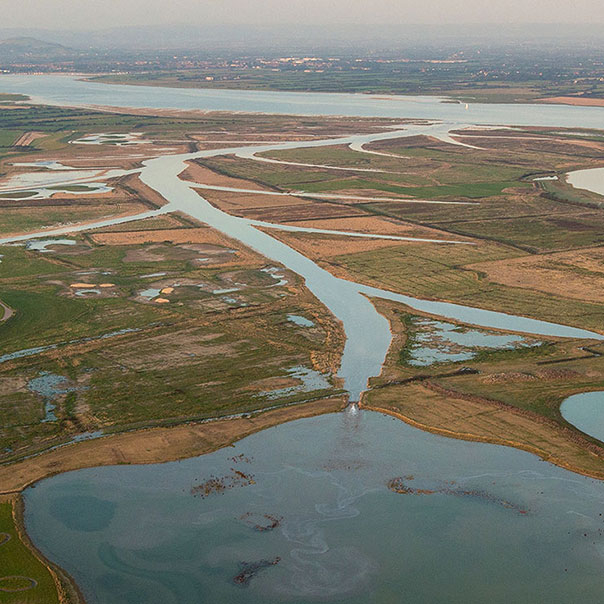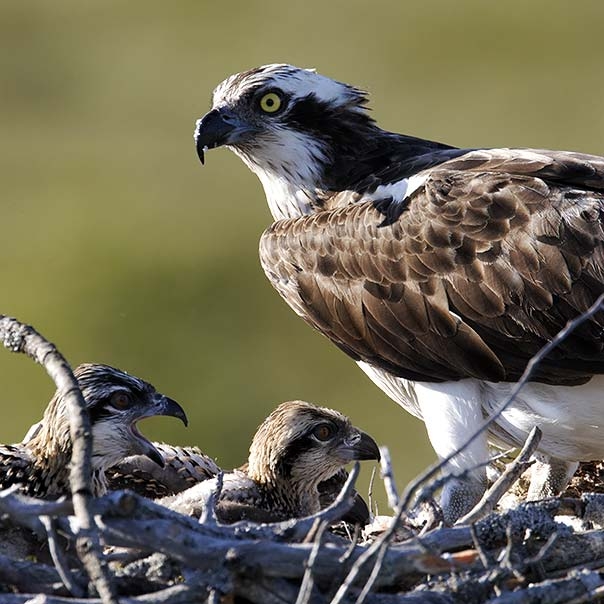Mangroves
Delve into the extraordinary forests of the marvellous mangrove, the incredible salt water survivor.
Lush, impenetrable forested swamps, mangroves thrive in the salty waters where land meets sea. They cover only 1% of the planet but are some of the most biodiverse places on earth.
From above, the mangrove forest offers a rich tapestry of colours, from its emerald foliage to the clear turquoise blues of its coastal margins and the murky waters of its intricate river systems. Delve deeper into these alien-looking forests and into the waters below. Hidden amongst this thicket of trees and twisted underwater roots you’ll discover a wealth of rare and extraordinary wildlife. Some are found nowhere else in the world; all are specially adapted to survive this hot, salty swamp.
The largest amount of mangrove is found in Indonesia, where mangrove trees cover some 23,000 square kilometres — more than twice the size of Jamaica!
Introduction to mangroves
What is a mangrove tree and how does it survive?
Mangroves are exceptionally tough and are one of only a handful of trees in the world that can tolerate salt water. The secret to their survival is a clever filtration system that keeps out as much as 90% of the salt as it enters their roots. They also excrete salt through their waxy leaves. To cope with the regular tides, some mangroves grow pencil like roots that stick up out of the dense wet ground, acting like living snorkels. Their twisty root network also protects them, holding the mangrove upright in the shifting sediment where land and water meet.
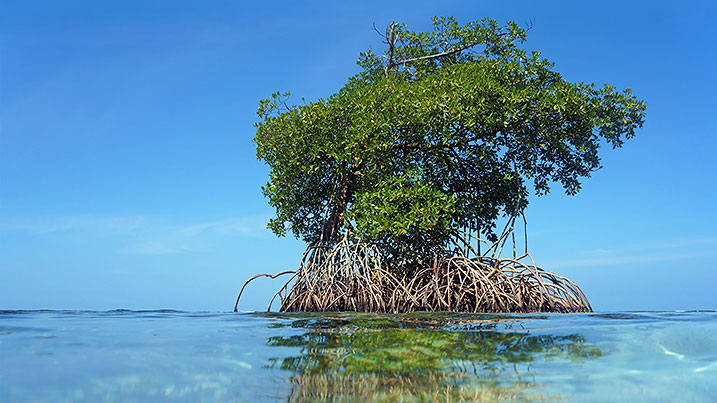
It’s estimated there are at least 50 types of mangrove around the world, ranging in height from two to ten metres. Some can handle tidal soakings and grow in the open sea, in sheltered bays and on fringe islands. Those adapted to drier, less salty soil can be found further from the shoreline. Others grow along riverbanks far inland, as long as the freshwater current is met by ocean tides.
Where can you find mangroves?
Mangroves grow in 118 tropical and subtropical countries around the world. They’re found from Florida all the way down to Argentina and on both the western and eastern coasts of Africa, as well as throughout the coastal fringes of tropical southeast Asia.
What lives in mangroves?
Mangroves provide shelter for many rare and endangered species, from hummingbirds to tigers. On the coast, where forest meets sea, juvenile sharks and shoals of brightly coloured tropical fish swim in the clear shallows of mangrove-fringed lagoons. Shafts of light shine through the water to the white sand below and reveal bright pink sea sponges that live among the mangrove’s underwater roots, which can be as colourful as reefs.
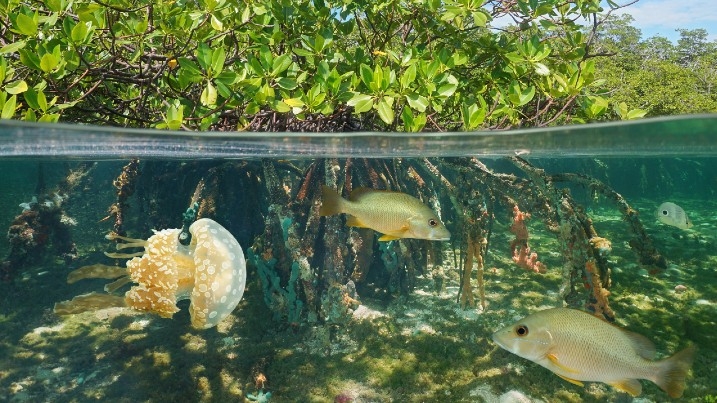
Deeper into the mangrove swamp and along the darker edges of inland creeks, the water is murkier, thick with sediment. Here shadowy shapes of crocodiles slip silently beneath the surface to hunt, while giant snakes bask in the sun on overhanging branches. Above, birds of prey circle and monkeys can be heard chattering in the undergrowth. And enveloping everything, the forest’s soothing, rich, silty scent.
For the animals that live among the trees, like spotted and muntjac deer, moving around is like negotiating a giant bed of nails created by the upper part of the mangrove roots. In Asia’s mangroves, the undisputed king of the forest – the Bengal tiger - stalks its prey, moving through the trees undetected, its stripes creating the perfect camouflage.
Mangroves cover just 1% of the planet’s surface.
Mangroves in culture and history
Mythology and folklore have long played an important part in protecting and regulating the exploitation of mangroves and their resources. In many mangrove belts the trees are worshipped as sacred groves and in some areas, Gods and Goddesses are worshipped as protectors of the ecosystem.
In the Sundarbans in Bangladesh, tiger-human conflict is a fact of life that sees about 40 people being attacked by tigers each year when they enter the mangrove forests to collect wood, honey and fish. So it’s no surprise that tiger gods, goddesses and spirits feature heavily in local culture and religion. One of the oldest folktales is that of Bonbibi the ‘forest maiden’ and Dakkhin Ray, the God of the Tiger. Bonbibi is the folk symbol of Mother Nature who promotes harmony between the people and the forest and offers protection from the merciless Dakkhin Ray, a sage who can transform into a tiger and kill people for disturbing his forest. The tale is written as a simple verse and chanted like a mantra when people enter the forest to offer them strength and protection against the tiger god. As the habitat of the tiger is squeezed ever more tightly, these human-nature conflicts can only become more prevalent, and the pressing need to find space for all becomes more urgent.
Along with seagrasses and saltmarshes, mangroves are 10 times more efficient at storing carbon than traditional forests.
Why we need mangroves
Biodiversity hot spot
High temperatures, heavy rainfall and a year-round growing season have helped make mangrove forests one of the most biologically productive and diverse places on earth.
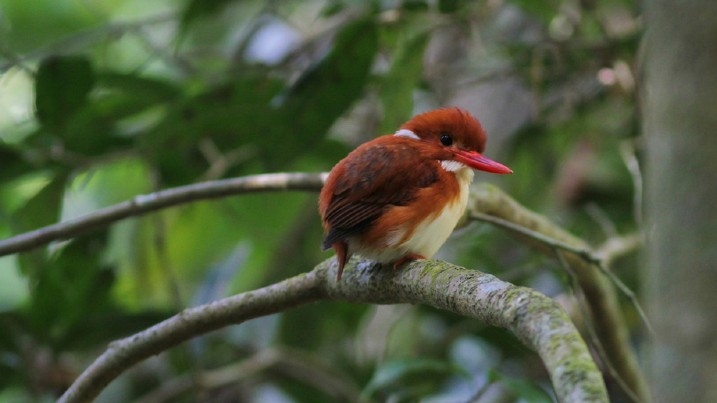
A crucial carbon sink
Like trees in the Amazon rainforest, mangrove forests lock away carbon in their stems and leaves. Their roots also trap sediment from the rivers, as well as twigs, leaf litter and other debris from the forest. As this organic matter decays and builds up over thousands of years, it creates carbon-rich soils, making mangrove forests one of the most important carbon stores on the planet.
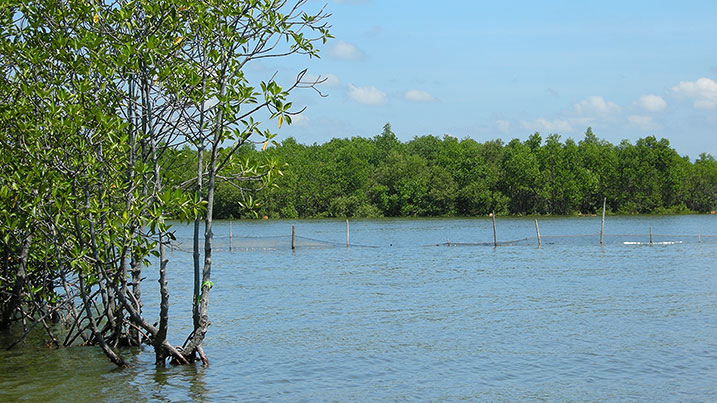
Shielding us from hazards
Mangroves form a thick, impenetrable natural buffer between sea and land and protect against the increasing number of disasters caused by rising sea levels and coastal flooding. They act as a barrier against waves, storm surges and tsunamis.
Vital protection for our fragile coastal margins
The mangroves’ dense root system traps sediment from rivers and off the land before it reaches the coast, protecting fragile coral reefs and seagrass meadows from being smothered.
Each kilometre of mangrove forest can reduce a storm surge by 50cm
Threats to mangroves
Mangroves are one of the world’s most threatened tropical wetland ecosystems and are declining at a worrying rate. Aquaculture, agriculture, coastal development, pollution, over exploitation and rising sea levels are all playing their part.
Mangroves and shrimp farming
Shrimp farming is one of the biggest threats to mangroves which are cut down to make room for temporary shrimp pools. Once the pools have gone, the toxic water that remains, containing shrimp feed, pesticides, chemicals and antibiotics is released back into the environment where it can harm the local ecosystems.
Those who have the most to lose are the local communities who depend on the mangrove forest for their livelihoods.
What WWT is doing to protect mangroves
WWT works around the world to protect, create and restore wetlands for wildlife and people. We are one of just six international organisations worldwide formally supporting the Ramsar Convention on Wetlands, a treaty to promote the benefits of wetlands, carry out research, improve protections and wetland use. We are helping to turn high-level policymaking into on-the-ground conservation through Ramsar’s CEPA programme (Communication, Education, Participation and Awareness). This programme delivers wetland projects in the UK and overseas, by offering technical advice and input. WWT also chairs the World Wetland Network, set up to help engage more NGOs with the Ramsar Convention and recognise their efforts,
As part of our work with WLI (Wetlands Link International) we are helping countries with valuable mangrove forests to create wetland centres that protect and celebrate them, and educate people on the vital role that mangroves provide for the Earth.
You might also be interested in
WWT creates, protects and restores wetlands for wildlife and people, including mangroves. Join and support WWT now to support our work and access all our wetland sites for free.
Support WWT